This post may contain affiliate links, which means if you purchase from one of these links I will receive a commission. Please read my full privacy policy for more information.
With so much buzz in the online marketing space about Facebook Ads, it’s easy to overlook Pinterest ads. Don’t make this mistake!
Pinterest is one of the fastest growing paid advertising platforms available. Even better, Pinterest ads cost less than Facebook ads in many cases and drive better ROI (return on investment) for their users.
One of the ways you can drive down the cost of your promoted pin campaigns is by retargeting leads.
But before you can dive into retargeting leads on Pinterest, I bet you’re wondering which types of Pinterest ads work the best?
Today I’m going to answer that for you!
updated March 2019
Which Type of Pinterest Ad Should I Choose?
In order to answer this question, you need to consider the strategy behind running your promoted pin campaign.
What is Your Pinterest Ad Campaign Objective?
Pinterest narrows your campaign objective options down to three categories: build awareness, drive consideration, or get conversions.
Which Pinterest Ad Objective Should I Choose?
With promoted pins, I rarely pick awareness for my campaign objective. Brand awareness and video views are paid by the impression. Whereas traffic and app installs are paid when you receive a click to your website or an install of your app.
My main objective for promoted pins is to drive visitors to take action.
Pinterest Conversion Campaigns
Ideally, I want to choose an objective under get conversions.
As of March 2019, conversion campaigns are still in beta testing. While I have access to them, you may not.
A conversion campaign allows you to optimize for a specific action you want your Pinterest visitor to take. The two most common conversions are email signups or purchases.
Most people who run promoted pins are used to paying for clicks using traffic campaigns. While you could always track the conversions in the ads dashboard, you are paying for the initial click to your site.
With conversion campaigns, you place a bid on how much you want to pay for the conversion and you pay Pinterest based on the conversion, not the click.
For example, you can bid $1 per email address signup and might end up paying Pinterest $.56 per email address signup regardless of how many clicks the ad received.
In my opinion, conversions campaigns are a game-changer for Pinterest. This puts them on a more equal footing with Facebook.
Pinterest Shopping Campaigns
Pinterest shopping campaigns are new. Shopping campaigns fall under conversions as catalogs. They serve retailers looking to promote their products.
A retailer can upload a spreadsheet with product information and promote several products at once with shopping ads.
Per Pinterest, “With Shopping Ads, businesses can seamlessly turn their product catalog into visual, actionable ads. Since Shopping Ads pull automatically from an existing product feed, they’re especially useful for brands that want to scale their Pinterest advertising.”
Pinterest Video Campaigns
You’ll notice when you scroll through your Pinterest home feed that almost all of the video promoted pins are created by very large brands such as Target and Carters.
Since video campaigns are charged by impression, they can end up being costly. Typical pinners are not yet used to seeing video on the platform nor clicking on video, which makes video ads not as effective (yet — in my opinion).
Right now, Pinterest is beta testing video ads that are paid per click. This would make video ads more appealing.
Pinterest Traffic Campaigns
If you are not a retailer and do not have access to conversion campaigns yet, your focus will be on traffic campaigns.
Pinterest traffic campaigns get you one step closer to your desired result by allowing you to pay for the click instead of the impression of your pin with no guaranteed action from the pinner.
Why Pinterest Traffic Campaigns?
In order to understand why you first need to understand how a Pinterest funnel works.
At the end of the day, if you’re paying for a Pinterest ad, wouldn’t you want to make money off of the ad?
When you’re paying for an impression of your pin, you’re paying for the first two steps in the Pinterest funnel.
- Your pin is shown in search results (keywords)
- Your pin’s image is driving brand awareness
This is the point at which you are charged by Pinterest if you choose a brand awareness campaign.
You can’t actually make a sale just by having your pin seen in the Pinterest feed.
Traffic campaigns get you to the next step, paying for the click to your website and getting your content seen. Once your content is clicked on, you can now convince your new potential customer to take action. An action is referred to as a conversion in the advertising world.
Since a click gets you one step closer to a conversion, you’ll want to choose traffic campaigns as your main objective when running Pinterest ads.
Make sure to follow these 8 simple steps for preparing your website for Pinterest ads to track conversions and check out the exact funnel templates I use to convert sales.
The BEST Type of Pinterest Ad
Let me preface this by saying that right now the best type of Pinterest ad is a traffic campaign unless you have access to conversion campaigns or you are a retailer and can use shopping ads.
A traffic campaign is the only type of promoted pin that charges based on clicks to your website.
It’s the most economical way to spend your money on Pinterest. Pinterest ads cost less in the long run when you choose traffic as your campaign objective.
Even if your objective is to grow brand awareness, you can still do that by only paying for clicks. Promoted pins are designed to push your pin out to thousands of people in order to optimize it for clicks. Thousands of people are viewing your pins — that’s called an impression. Utilizing a traffic campaign allows you to build brand awareness and page views to your website, but you are only paying for the click. Genius, right?
How Much Should Pinterest Ads Cost?
In this example, I’ve been running a campaign for only 3 days. I’ve received 8,972 impressions, 392 clicks, and I’ve paid $.14 cents on average for each click.
Impressions = how many times your pin has been shown in the smart feed, related pins, or search results (if you selected for your promoted pins to show in all of these places).
Clicks = the number of clicks you received to your website
CTR = click-through rate (with the introduction of one-tap campaigns, I strive for 1% or higher for my CTR)
CPC = cost per click is the average of how much you’ve paid per click to your website (the minimum you can bid is $.10 USD)
How Does One-Tap Impact Pinterest Traffic Campaigns?
As of August 2018, Pinterest has introduced a mandatory one-tap system for all of their traffic campaigns.
On Pinterest, we’re used to clicking on a pin from the Pinterest feed and going to the close-up of the pin.
This is what a close-up of a pin looks like.
In the close-up view, the user can see more information about the pin before making a choice about whether or not to follow through with the click to the website.
Now, users will make the decision to click right from their feed.
How To Make Your One-Tap Pins Convert
With one-tap you’re asking the user to make a decision with no other information other than the picture and text overlay of your pin. You don’t want to waste money paying for clicks from people who are not actually interested in your content.
Leverage text overlays on your pin images to explain what your content is about and present them with a call to action that entices them to click.
Pinterest Ads One-Tap Recommendations
- Since users will no longer need to click twice to get to your site, your CPC (cost per click) should go down and your CTR (click-through rate) should go up. In my Pinterest ads course, I teach to start bids at $.20 (which is a lot lower than Pinterest will recommend).
- Promoted pins allow you to target keywords based on broad, phrase, and exact matches. Under the keywords section in your ads dashboard, you can also see the exact search queries people found your promoted pin under. This is helpful data, especially when using broad match keywords. Since we get charged as soon as a user clicks on our pin, I want to make sure I’m showing up in relevant search results. Because of this, I am changing my campaigns to phrase match for the time being. I also run split tests on my campaigns with one ad group being broad keywords and the other being phrase match keywords.
- Instead of focusing on the exact number of keywords you should use in your promoted pin campaign, I would encourage you to find as many relevant keywords that you can for what you are promoting and upload those keywords as phrase match.
- Your creative (image) and text overlay should make it super obvious what your pin is about. You’ll want to make sure people know what they are clicking on so that you only pay for relevant clicks. Pinterest users won’t have a second chance to decide whether or not to click by going to the close-up, make it obvious!
Are you ready to set up your first Pinterest ad campaign?
Your Step-By-Step Guide for Running Successful Pinterest Ads Series
Pin Practical Ads — free training on how to run a profitable Pinterest ad campaign
Pin Practical Promotions — an advanced-level Pinterest ads course on how to strategize, implement, analyze, and refine low-cost promoted pin campaigns
8 Quick Steps To Prepping Your Website for Pinterest Ads
The Easy Way to Retarget Leads Using Pinterest Ads
The Best Types of Pinterest Ads For Driving Sales <– this post!
Pin it!
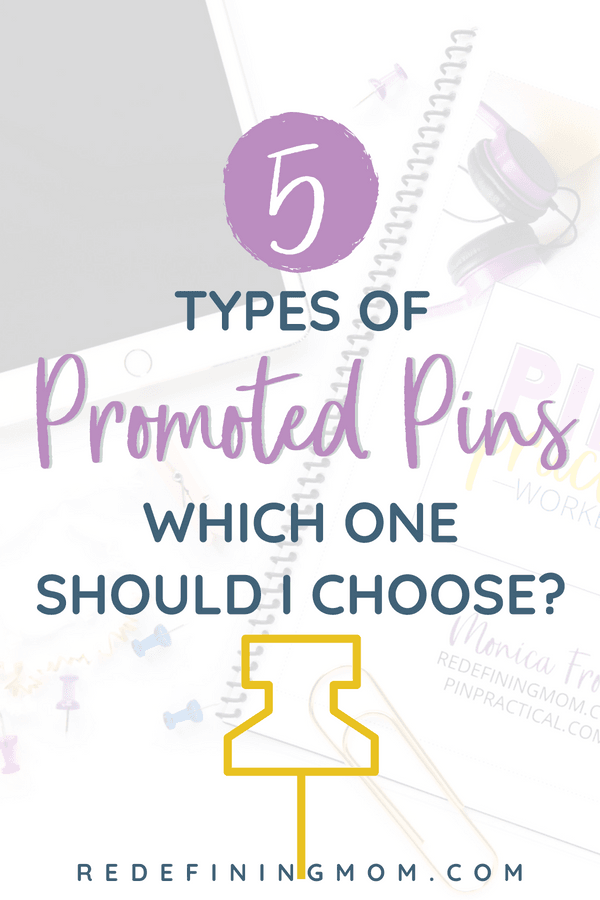

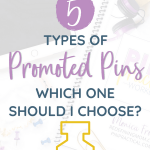
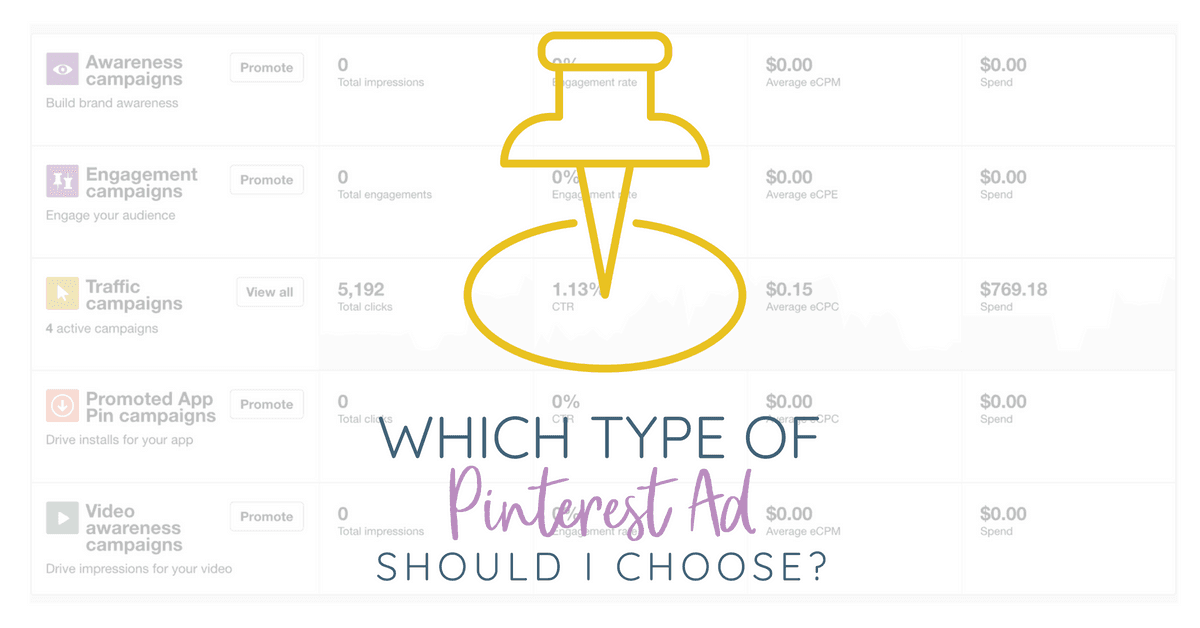
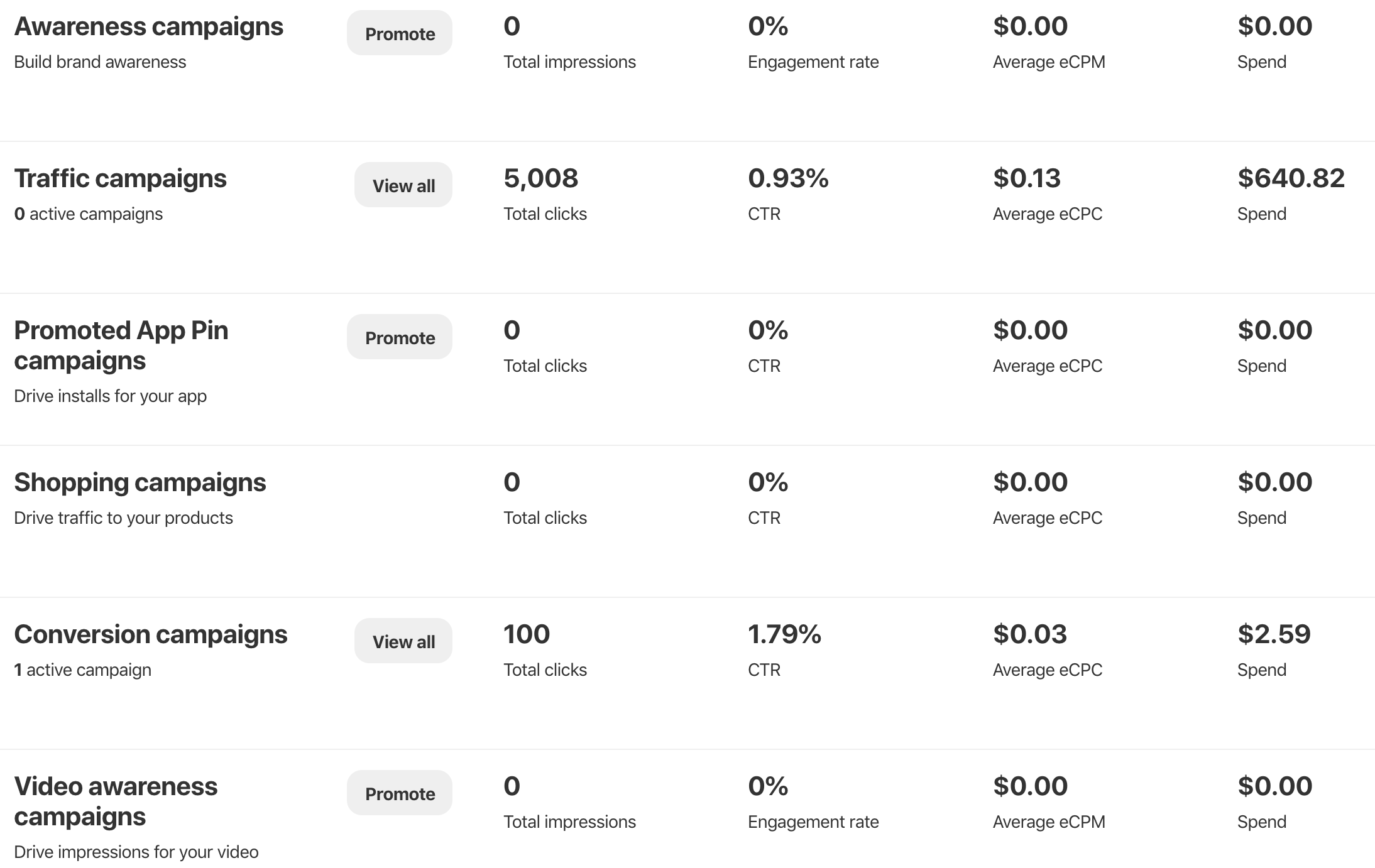

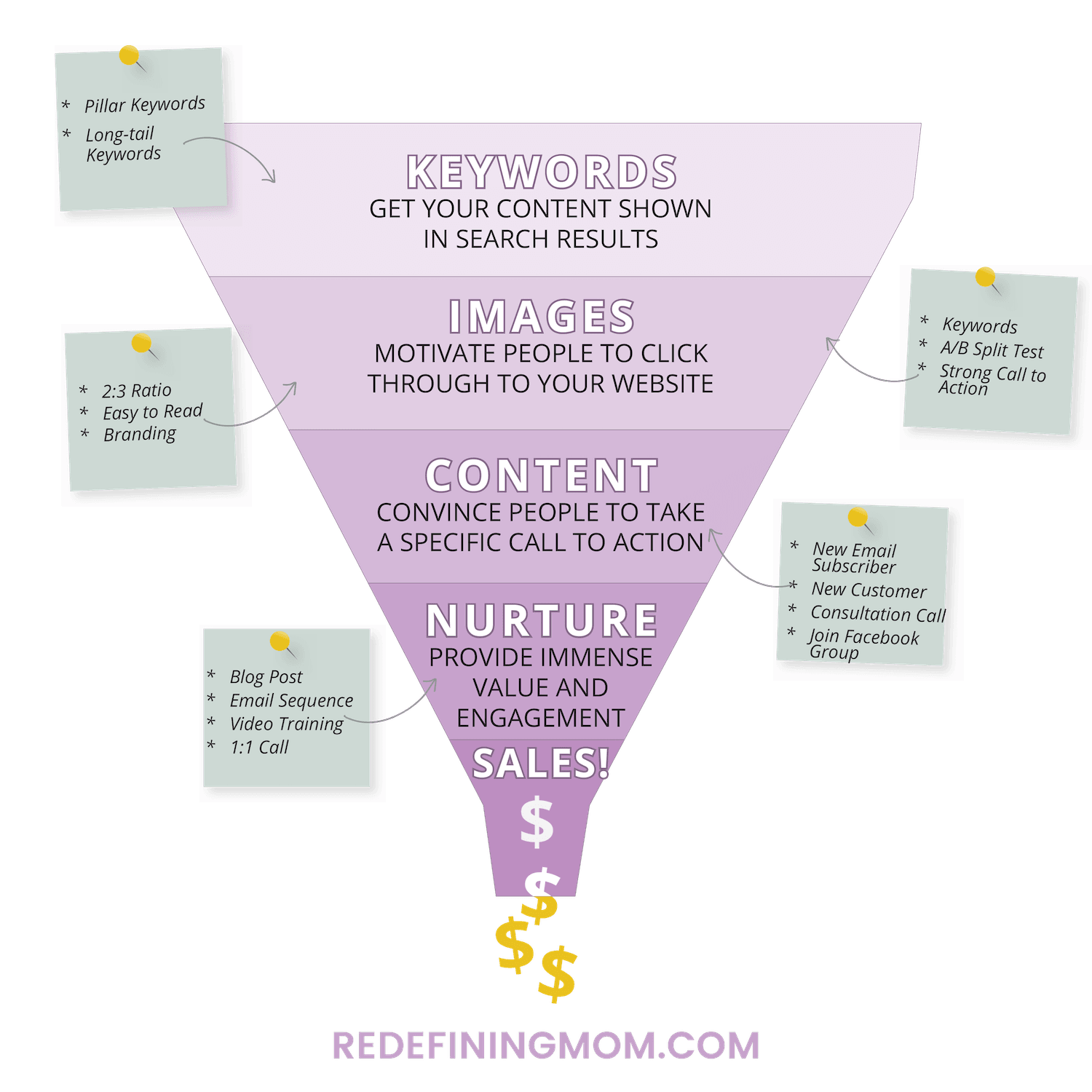

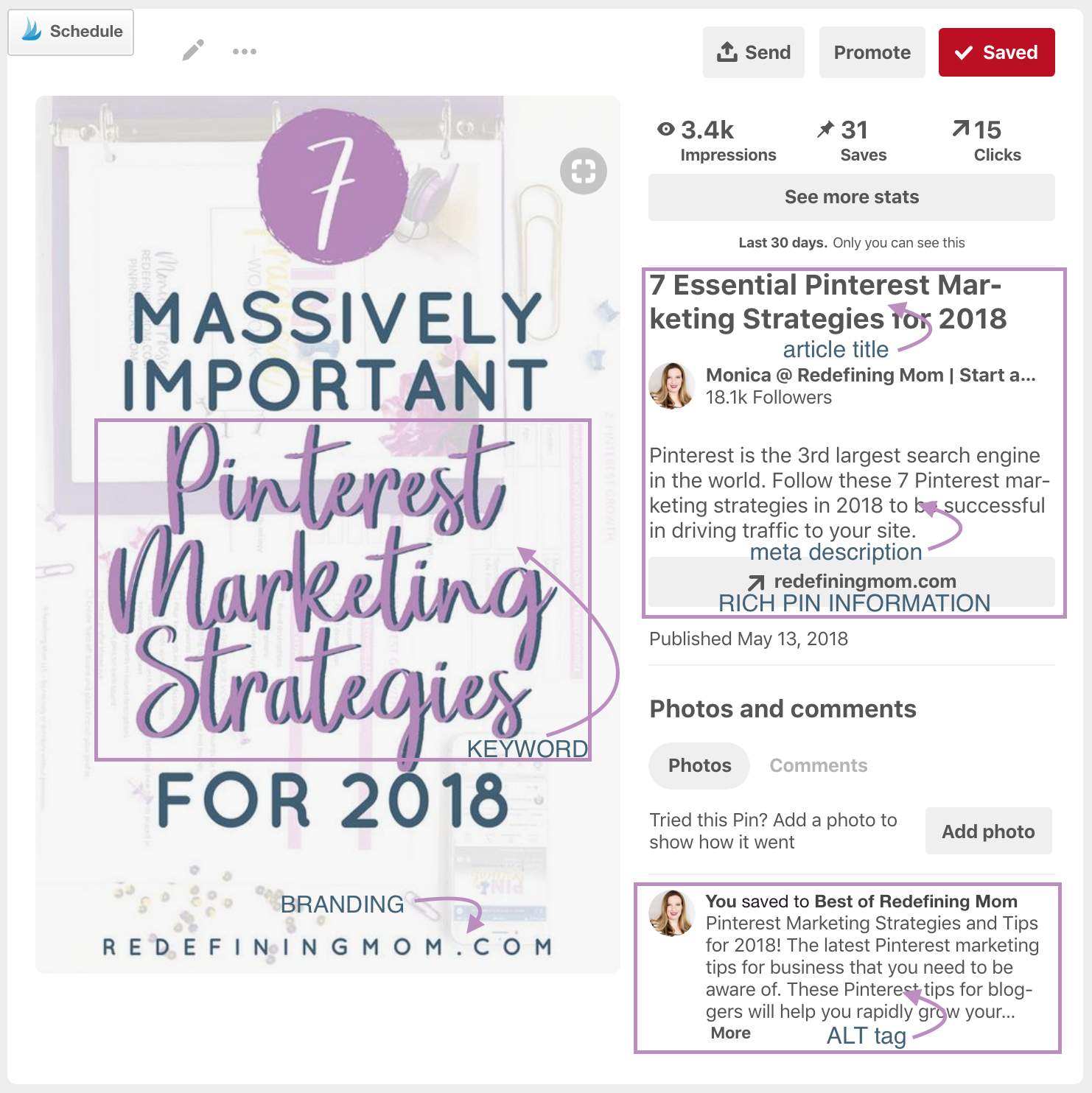
One Comment